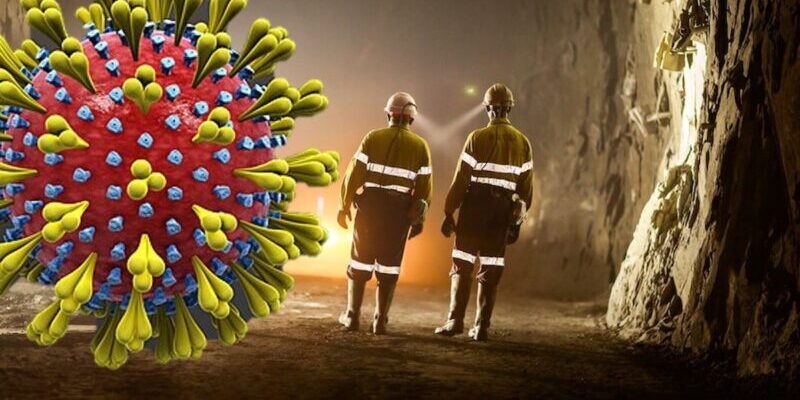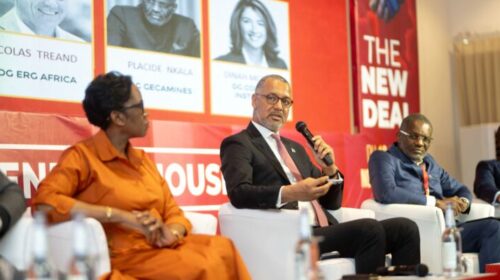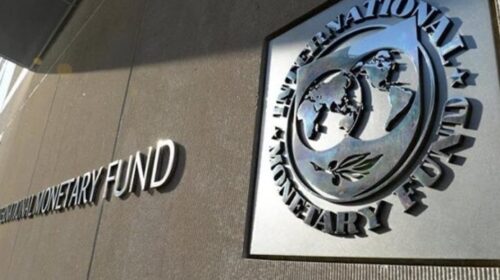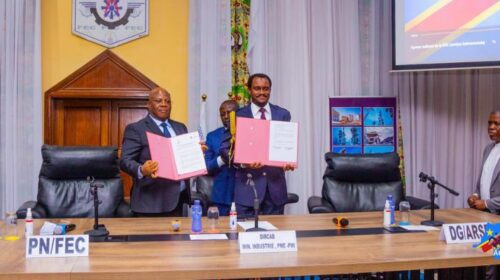The Covid-19 challenge for the Democratic Republic of Congo mining sector
The Democratic Republic of Congo (DRC) is one of the countries in sub-Saharan Africa most affected by COVID-19. Unlike other countries, the DRC is facing not only the pandemic, but also the resurgence of Ebola in North Kivu. Added to these crises is an acute economic crisis. The World Bank (WB) and the International Monetary Fund (IMF) are predicting the recession of sub-Saharan African economies, not seen since 1970, and that they will need billions of dollars to stimulate their economies.
The importance and vulnerability of the extractive sector
The health crisis is weakening the mining sector in the DRC in particular with the significant fall in copper and cobalt prices in recent months. Indeed, the DRC’s economy depends on exports of these mining products (see table below) which are integrated into global supply chains. As a result, restrictions imposed within these channels where China dominates heavily could severely affect the Congolese economy.
The informal mining sector, which is estimated to produce 15% in the copper and cobalt sector, also plays a key role, particularly in the economies of mining regions. Indeed, as much as the industrial mining sector feeds the state budget, mining crafts generate subsistence income for the many artisanal miners, whose number is estimated between six hundred thousand and one million.
Impact of the pandemic on the mining sector
Restrictions and containment measures affect the supply of entrants and the provision of the services and skilled labour that the mining industry needs. As a result, Glencore suffered a delay in the arrival of inputs for the construction of its acid plant and had to return more than 300 Indian employees, while some of its staff went into technical unemployment. Other companies such as Kamoa Copper and Sicomines have quarantined their mines. This adds to the risk of a decline in global demand for certain minerals due to the economic aftershocks of the pandemic, and portends a significant impact on the performance of the DRC’s mining sector.
The Think Tank Congo Challenge led by former Prime Minister Matata predicts a 20% annual decline in government revenues in the copper, cobalt and oil sectors, excluding revenues collected by state-owned companies. In the short term, the pandemic could further affect tariffs, which, according to an ongoing NRGI study, are the largest as the mining sector’s contribution to the state budget.
Local governments in producing regions, which since 2018 have been receiving direct payments from mining companies, will also be affected. Moreover, the health crisis is spreading in an already precarious economic context. At the beginning of April, the Central Bank of Congo’s foreign exchange reserves were USD 693 million, equivalent to just two weeks of imports. The government has revised down growth in 2020 to 1% from an initial forecast of 4%, and the IMF is predicting a contraction of 2.2%, the worst performance since 2002, while inflation would worsen to 11% from 5% initially.
Possible solutions for the DRC
As elsewhere in the world, the Congolese government has taken steps to limit the spread of the virus and protect the economic fabric. President Felix Tshisekedi has set up a multi-sector task force. No stimulus package has yet been released, but a fiscal response is excluded as fiscal and borrowing room for maneuver is limited. As of January 2020, the government’s financial operations had closed with a negative balance of CDC 136 billion, or US$80 million. The priority is to achieve debt relief and new loans, a process already underway with the World Bank, the IMF and the African Development Bank (AfDB).
In addition to the IMF-approved debt relief, which saves the country USD 20 million, the Fund has just approved a new $363.27 million rapid credit facility, following the December 368 million at the begining of December 2019, while negotiations for a more ambitious program are underway. Another measure could be to review tax policy, both to specifically facilitate the entry of the equipment needed to combat the virus, and more broadly to mitigate the economic impact of the crisis. Similar measures were taken in 2008 to curb the impact of the financial crisis on the mining sector.
However, the government should be cautious about the effectiveness of a tax response in relation to the mining sector. As the sector is heterogeneous in terms of the dynamics of mining products (for example, gold is currently doing well) and mining projects, the impacts may vary from one sector to another, and within one sector, from one project to another.
The government should consider the following guidelines in formulating policy or tax responses:
Define the objectives of the intervention. For example, responding to specific impacts of the crisis such as the risk of job losses.
Determine whether political or fiscal intervention will have the desired impact. There would be a need for modelling of the impacts of the measures, and a careful definition of selection criteria and conditions to benefit from them as recommended by IGF and ATAF.
Take into account the real capacity of the public administration to oversee the strict implementation of these measures.
Publicly disclose the measures taken to report to citizens. The pandemic is already affecting the DRC’s mining sector and the country’s economy more broadly, and citizens should soon express their frustrations. By providing answers to this crisis, the government should make transparency and accountability the pillars of its management. Such governance would allow all Congolese to appreciate all the government’s efforts, but even more their impact on the national economy and their living conditions.
By Jean-Pierre Okenda (Translated by CKM Staffer)
Manager for Natural Resource Governance Institute





